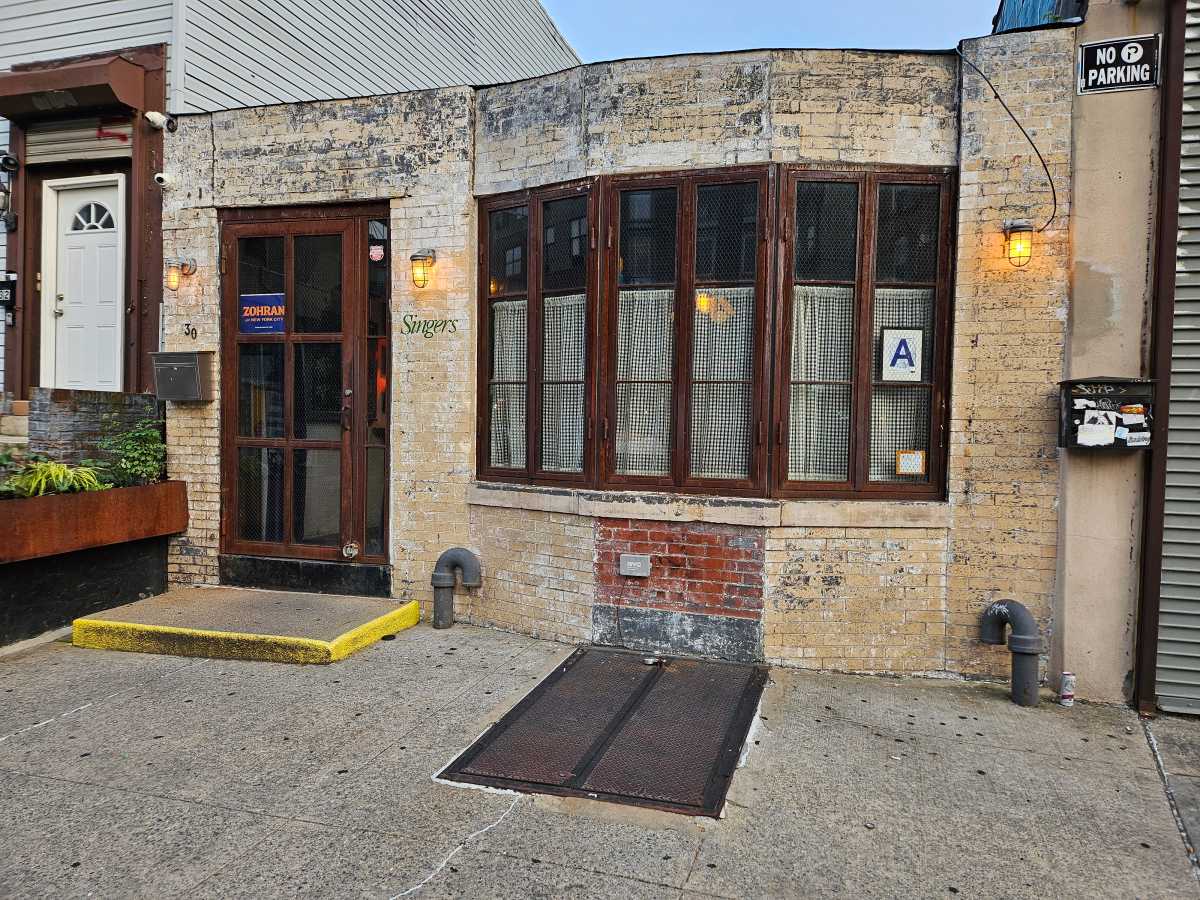By Sarah Ferguson
The owners of a five-story tenement at 47 E. Third St. can’t evict all the tenants and convert the building into a mansion for themselves unless the state agency charged with monitoring rent-regulated apartments approves the transfer first.
So ruled New York Supreme Court Justice Faviola A. Soto on March 6 in a case that could set precedents for other owner-occupancy disputes across the city.
Judge Soto granted a permanent injunction barring the owners, Alistair and Catherine Economakis, from terminating the tenants’ rent-stabilized leases unless the State Division of Housing and Community Renewal consents to the plan.
“We’re thrilled,” said Barry Paddock, a production assistant who has lived at 47 E. Third for 14 years. “We’re hopeful that the landlords will just accept the decision and find a home for themselves elsewhere and leave us in peace.
“They are obviously people of resources, if you just look at the amount of money they must have spent to pursue evicting us over the last two and a half years,” added Paddock of the Economakises, whose family members have substantial real estate interests across the city.
Catherine Economakis’s father, Peter Yatrakis, is the founder of Granite Management. She, her father and other family members have ownership stakes in at least two-dozen other buildings in the East Village, Chelsea, Harlem and Brooklyn — all managed by Granite. Catherine’s mother is dean of academic affairs at Columbia University. Alistair Economakis is the son of a Greek shipping magnate. Both Catherine and Alistair work for Granite.
Reached on Tuesday, Alistair Economakis said he and his wife fully intend to appeal. “I think the court erred in its decision and misapplied the law,” he told The Villager, though he declined to explain why he thought the judge was wrong. “That’s going to be outlined in my appeal,” he said, and directed further legal questions to his lawyer, Todd Rose, who did not return phone calls requesting comment.
Economakis also did not reject outright the idea of applying to D.H.C.R. to take over the building. “We’re exploring all of our options,” he said.
The case stems from a lawsuit filed by Paddock and four other longtime tenants, who sued to block the Economakis couple from gutting the 104-year-old tenement in order to transform it into a swanky, 9,000-square-foot residence for themselves, their child and live-in nanny. Court papers submitted by the Economakises lay out plans for a five-bedroom, seven-bathroom mansion replete with a private library, gym, “home study area” and a master bedroom suite that would take up the entire fourth floor.
The Economakises have been seeking to use a provision in the Rent Stabilization Code that allows owners to take over “one or more dwelling units” for use by themselves or an immediate family member. They, like other landlords across the city, have argued that the statute does not impose a limit on the number of apartments an owner may seek to inhabit.
But, as Judge Soto pointed out, the Rent Stabilization Code specifically requires D.H.C.R. approval before an entire rent-stabilized building can be removed from the rent rolls.
Given the strict guidelines for when such transfers are allowed, attorneys for the tenants say it’s questionable whether D.H.C.R. would ever approve of the deal.
“We don’t think there’s any possibility of them getting permission from D.H.C.R., because they don’t come within any of the grounds by which a landlord can take a building out of rent stabilization — such as demolition or hardship,” said Steve Dobkin, lead attorney for the 47 E. Third St. tenants.
According to the Rent Stabilization Code, an owner may only remove a whole building from rent regulation if the property is to be demolished, if the owner can prove it is too dilapidated and hazardous to be worth fixing or if the owner requires “all or part of the housing accommodations or the land for his or her own use in connection with a business which he or she owns or operates.”
Turning the whole building into a single-family residence would not qualify as a “business” use of the property, says Dobkin.
In court, the Economakises’ attorneys argued that D.H.C.R. approval is not required. They cited previous cases where landlords were allowed to take over whole buildings for their private use. But those cases involved smaller properties where the owners were already occupying a substantial portion of the building and merely wanted to recover one or more apartments.
“This is the first case where an outside owner wanted to take over an entire building,” maintains Dobkin. “They can try to appeal to the appellate court, but I don’t think they will succeed. It’s a very well-reasoned decision, and I would expect it to be upheld.”
“We really don’t’ think they want to go to D.H.C.R.,” added Paddock, who accuses the Economakises of seeking to evict the building’s rent-stabilized tenants — who pay between $500 to $1,000 a month — so they can either rent their apartments at market rates or sell the empty building at a higher profit.
The Economakises insist they want the 47 E. Third only for themselves.
They have already succeeded in emptying six of the building’s 15 apartments and are now in the process of demolishing the interiors to create a luxury duplex on the fourth and fifth floors and a triplex extending from the first to third floors.
Alistair Economakis, who says his wife is now pregnant with her second child, says they plan to move in “within the next few months, when the renovations are completed.”
They say they will live in these two expanded apartments on an “interim” basis, while they pursue evictions against the remaining 13 residents, so that they can proceed with their plans to gut renovate the whole building and turn it into a single residence.
Asked whether it won’t be rather uncomfortable living among tenants while they battle them in court, Economakis replied, “It is what it is. It’s my building, and I’ve always told the tenants that my intention is to live there. I’m 100 percent moving into the building.”
Tenants, however, see the renovations as just another means to harass them and get them out. Paddock said two families with young children left last summer with undisclosed settlements because they could not take all the noise and dust from the apartment demolitions, on top of the stress of the legal battle.
The Economakises have been pushing to settle out of court with the remaining holdouts. Last October, they sent a letter offering to relocate any tenant who agreed to a “two-bedroom, railroad-style apartment” in the neighborhood renting for $1133.07 a month.
Paddock said he refused, even though he currently pays $950 a month for his small one-bedroom. “The idea of this becoming a nanny’s bedroom disgusts me,” said Paddock of his fourth-floor abode. “And I don’t trust that they wouldn’t find a way to get me out of there if I did move, given all they’ve done to us here.”
Still, their court victories have come at a price. Tenants say they’ve racked up more than $150,000 in legal expenses fighting for their homes.
“I personally owe the lawyers $8,000,” said Paddock. “Others have borrowed from their families or cancelled their vacations or put it on their credit cards.”
Miriam Garcia, who moved into the building with her husband 29 years ago, said her son Steven left college temporarily and took a job in order to help the family pay their share of the legal expenses. They live in a small two-bedroom unit with her other adult son, who is disabled
Tenants have held stoop sales and fundraisers and even set up a PayPal account to collect donations for their legal fund. They say they’re fighting not just for themselves, but to prevent other landlords from taking advantage of the owner-occupancy loophole to pursue mass evictions of tenants elsewhere.
“If you walk around the city and imagine all of these tenements turning into single-family mansions for rich people, it’s a very chilling thought,” noted Paddock. “Where will we all go?”






































